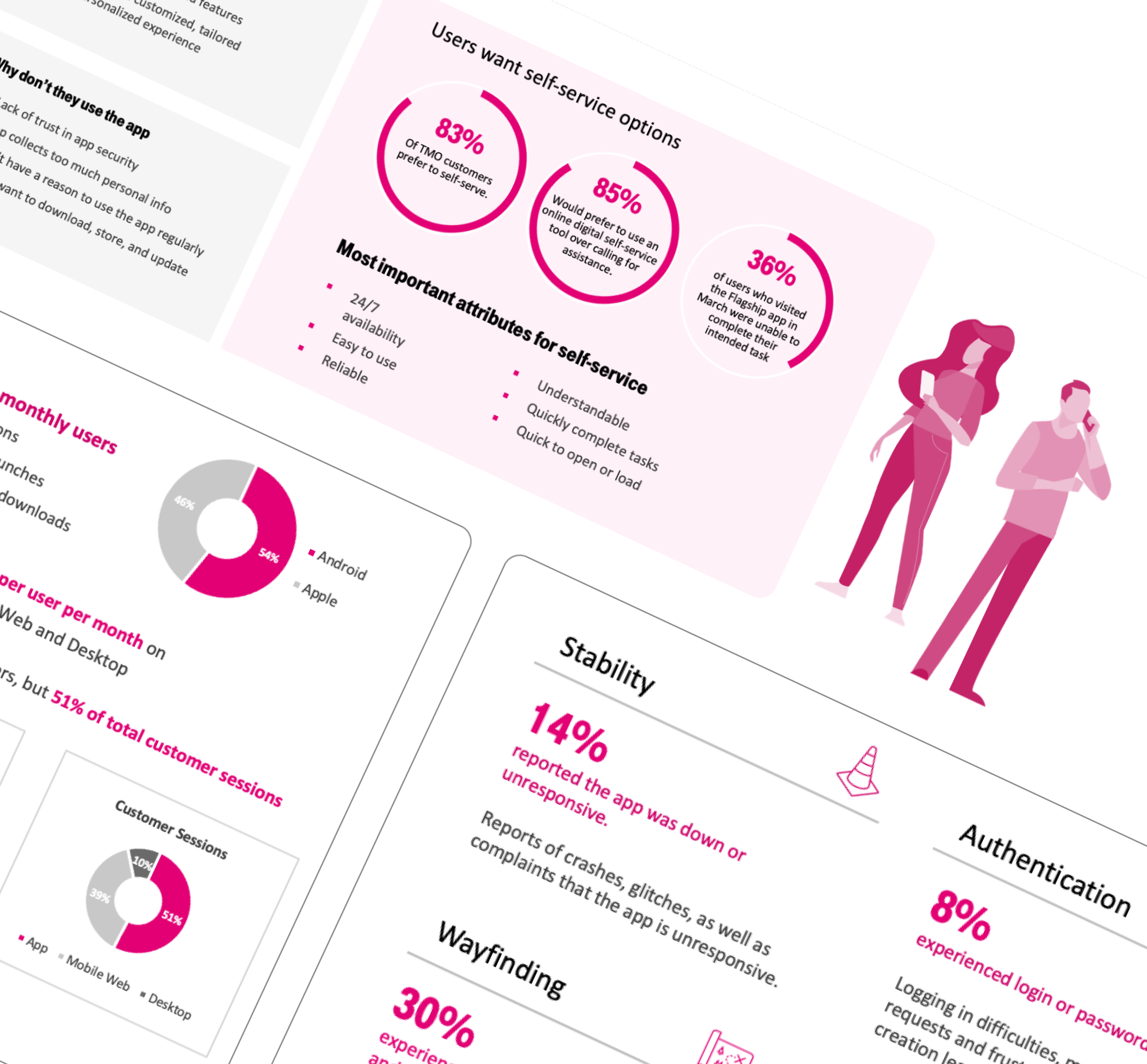Transforming a disjointed app experience into a trusted digital touchpoint
Overview
The T-Mobile flagship app, a cornerstone of the brand's digital strategy with over 10 million monthly active users, faced a critical challenge: despite high engagement, low customer satisfaction threatened to hinder the larger strategy of strengthening adoption of this digital channel.
My responsibilities
Research synthesis
Data visualization
Information architecture
Stakeholder management

Opportunity
Digital leaders for the flagship app challenged the design team to create a comprehensive analysis and scalable strategy recommendations to guide a collaborative 1-3 year iterative product and experience roadmap.
The product and engineering group had a lot of great technical-focused data about potential improvements, but they needed to show leadership what it meant from a customer experience perspective.
Action
To gain a comprehensive understanding of the app and its experience issues, I began by diving into existing documentation and research. This initial investigation immediately exposed a complex challenge: numerous decentralized teams, fragmented information, and the absence of a centralized source of truth.
I was able step in and collaborate on this initiative and worked with a handful of experts to turn that data into a clear story, pointing out key problems and opportunities.
Bringing order to valuable but disparate insights
I synthesized the massive amounts of qualitative data into digestible, actionable insights by creating sentiment-focused snapshots. This approach streamlined analysis and presented a coherent narrative of key interactions and friction points.
Leveraging analytics with collection limitations
By collaborating closely with a data analyst and Adobe Analytics, I was able to identify areas with high drop-off and confusion rates. This quantitative validation of initial observations strengthened understanding and guided next steps toward creating a visual story of these insights.
RESULTS
Crafting digital investment recommendations through an experience-first lens
All of the feedback was organized it into 6 areas of focus, which made it easier for the decision-makers to see what needed fixing and where to start. Plus, by sharing the stories behind the data the team was able to visually bring those issues to life and help provide direction on a roadmap that design and product could build together.
These areas were chosen because they were the ones where the biggest difference could be made for customers, while also hitting some important business goals. Thinking realistically about timing, the priorities were based on what needed to be fixed right now, what could be tackled next, and what needed to be planned for later.
These were grouped around broader ideas, so the teams who were responsible could delegate it to the corresponding product experts. Examples include: keeping the design consistent, making the app easy to use, and building trust through privacy and security.
This priority diagram clarified the recommended sequencing from a UX perspective, enabling product teams and stakeholders to better understand an iterative path to improvement.
Each of the areas got dedicated guidelines that included foundational standards (to maintain a consistent and expected experience) and detailed recommendations.
AREA OF OPPORTUNITY: NAVIGATION
AREA OF OPPORTUNITY: PRIVACY/SECURITY
Outcomes & impact
This comprehensive report formed the basis for 15+ design-led presentations, securing organization-wide support from key decision-makers. Additionally, it significantly influenced T-Mobile's digital strategy, resulting in increased funding and focus on critical app enhancements.
6
New app initiatives including information architecture improvements, design system consolidation, and reducing reliance on web-views by 50%.
3
Year roadmap secured to ensure ongoing improvements to the app’s foundational areas including account management and technical stability.